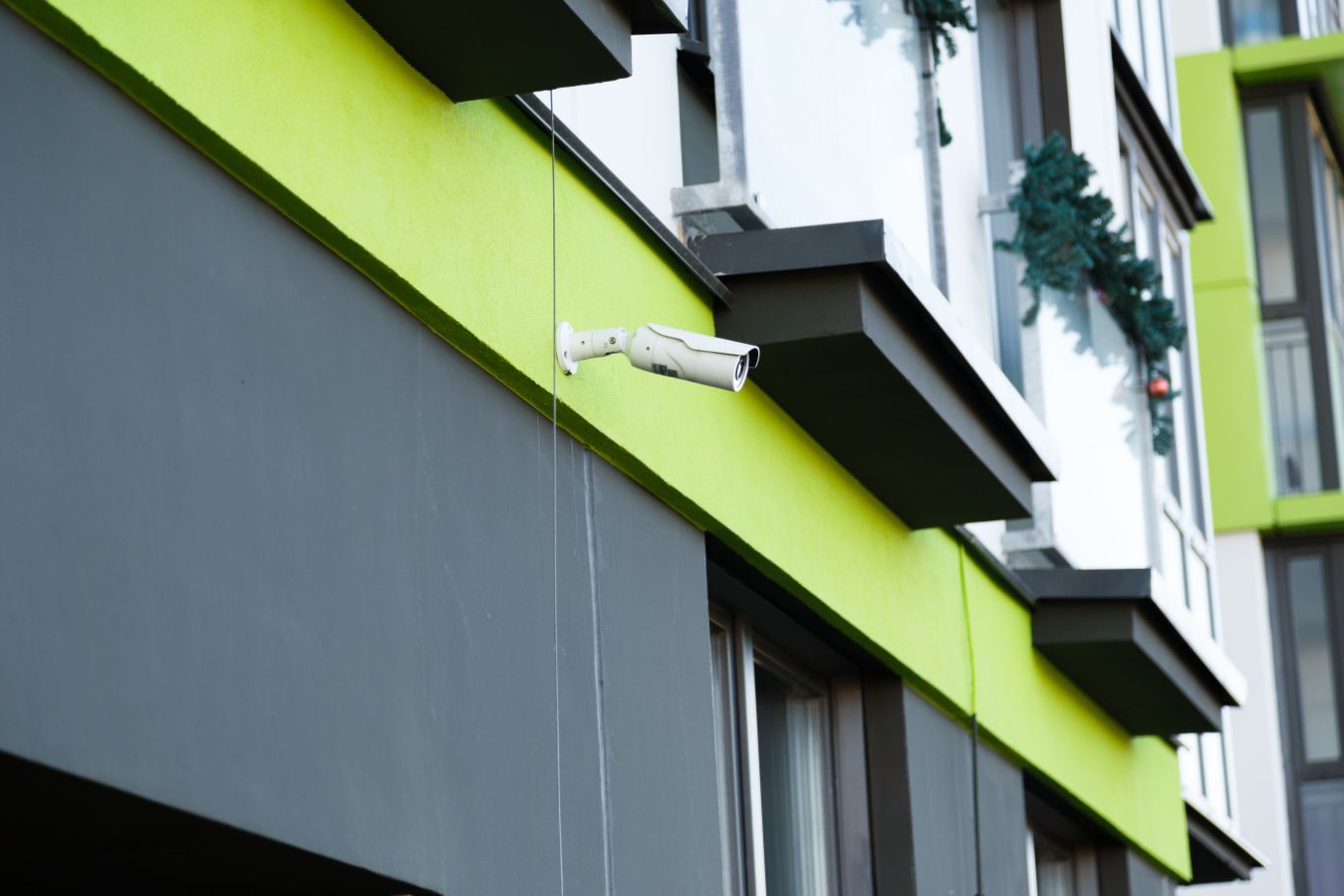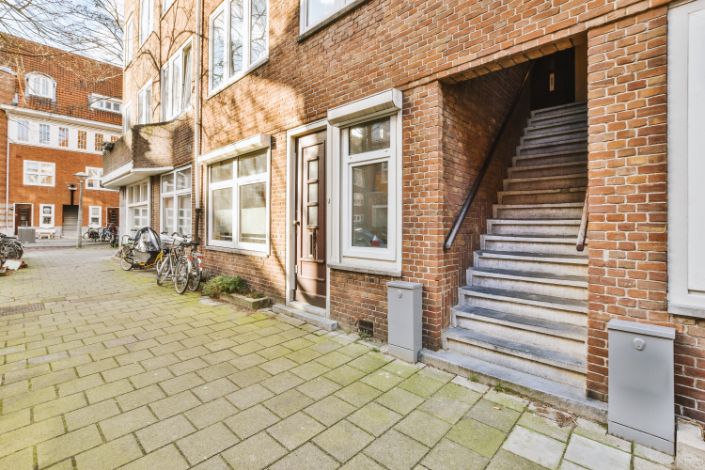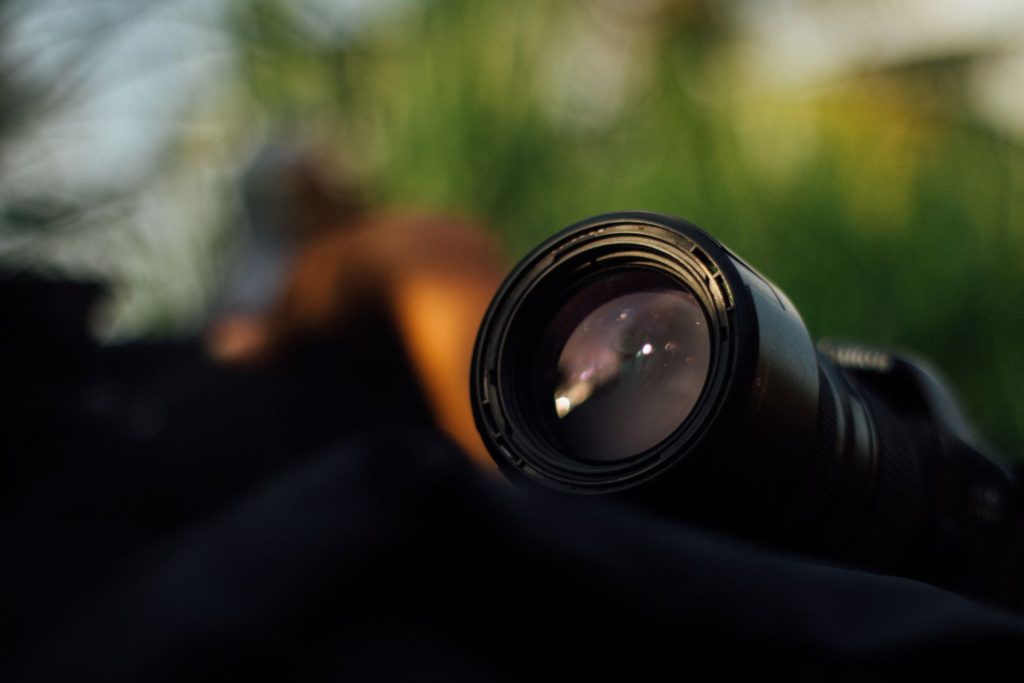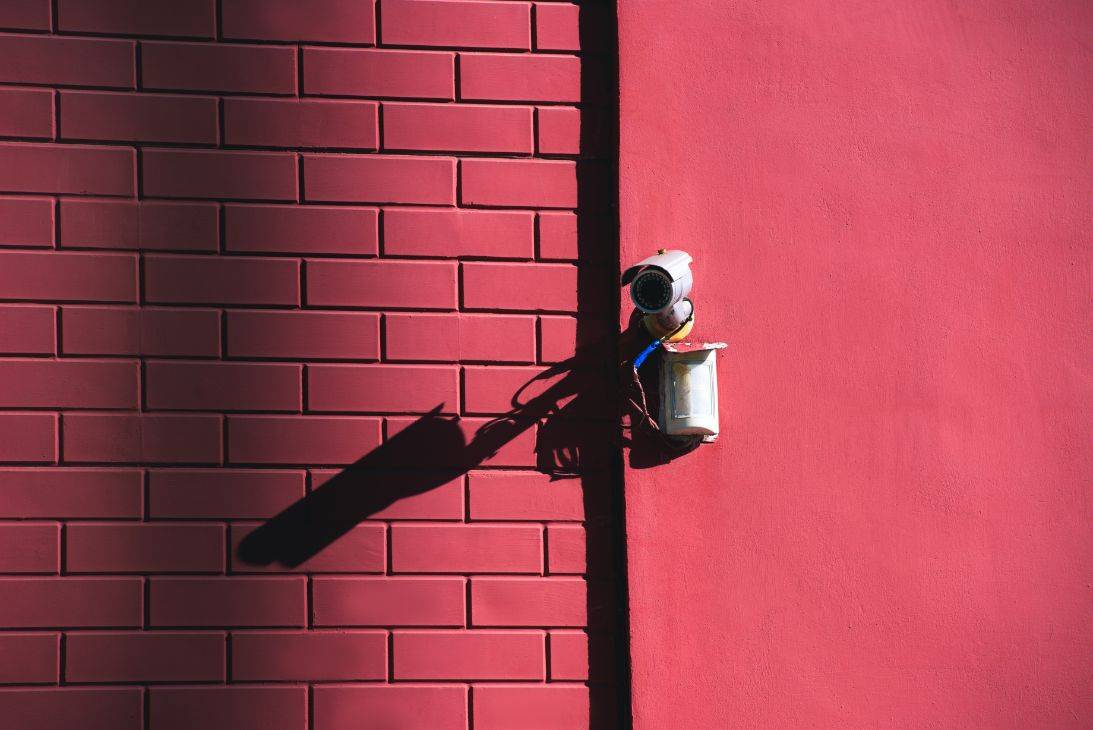In general, the effective range of security cameras varies depending on several factors. What is the maximum distance for security cameras? During daylight hours, standard security cameras typically cover distances ranging from 10 to 70 feet. Advanced night-vision cameras can extend this range to approximately 100 to 200 feet. Nevertheless, for exceptionally long-range surveillance, specialized cameras such as CCTV equipped with amplifiers can achieve distances of up to 3000 feet. The range of a security camera is influenced by factors such as lighting conditions, camera lens quality, night vision technology, lens focal length, camera placement, and the use of additional accessories.
- Operational Range of Security Cameras
- Lighting Conditions
- Camera Lens Quality
- Night Vision Technology
- Lens Focal Length
- Camera Placement
- Additional Accessories
Operational Range of Security Cameras

When it comes to establishing a robust and effective surveillance system, one of the paramount considerations is the operational range of your security cameras. This critical aspect determines the distance over which your cameras can reliably capture footage, and it plays a pivotal role in the overall efficacy of your security setup. The operational range is influenced by various factors, including lighting conditions and camera technology, and understanding these nuances is essential for making informed choices.
During daylight hours, standard security cameras exhibit operational ranges that typically span from 10 to 70 feet. These cameras rely on the ambient natural lighting conditions, coupled with the quality of their lenses, to produce clear and detailed images within this range. This range is well-suited for monitoring areas like doorways, driveways, and smaller yards where the coverage area is limited and well-illuminated by natural light. However, it’s important to note that as the distance from the camera increases, the level of detail captured may diminish.
For comprehensive surveillance, especially during low-light or nighttime conditions, advanced night-vision cameras step in to extend the operational range. These cameras employ cutting-edge technologies, such as infrared (IR) illumination, to significantly enhance visibility in the dark. As a result, they can effectively capture footage at distances ranging from approximately 100 to 200 feet in conditions where standard cameras would struggle. This extension of the operational range is a game-changer for nighttime security, as it provides clearer and more useful footage, allowing you to monitor larger areas and detect potential threats with greater precision.
In situations that demand exceptional long-range surveillance capabilities, specialized cameras with amplifiers come into play. Closed-circuit television (CCTV) cameras equipped with amplifiers can achieve astonishing operational ranges of up to 3000 feet. This is the maximum range of security cameras. These cameras are commonly employed in expansive industrial and commercial settings, where monitoring vast areas or perimeters is imperative. The use of amplifiers allows these cameras to capture detailed footage over vast distances, making them indispensable for protecting large-scale facilities.
Understanding the operational range of security cameras is paramount when designing a surveillance system tailored to your specific needs.
Depending on your requirements and the prevailing lighting conditions, you can opt for standard cameras for shorter distances, advanced night-vision cameras to bolster low-light performance or specialized CCTV cameras equipped with amplifiers for extreme long-range surveillance. By carefully assessing these factors, you can select the ideal camera that aligns with your security objectives, ensuring comprehensive coverage and reliable monitoring.
Lighting Conditions

Lighting conditions are a critical factor that can significantly influence the performance and operational range of security cameras. The ability of a camera to capture clear and detailed footage is closely tied to the available light, and understanding this relationship is pivotal when designing an effective surveillance system.
During daylight hours, security cameras benefit from natural illumination. In well-lit areas, standard security cameras can operate within their typical operational range, which generally spans from 10 to 70 feet. Natural light, when ample, provides cameras with the necessary brightness to capture clear images. However, it’s essential to recognize that even during the day, variations in lighting can occur. Factors such as shadows cast by buildings or trees, changing weather conditions, and obstructions like parked vehicles can create uneven lighting patterns. These fluctuations can impact the camera’s ability to maintain consistent image quality, especially at the outer limits of its operational range.
Therefore, while daylight conditions are generally favorable, it’s essential to consider potential sources of interference when positioning cameras.
Meanwhile, low-light and nighttime conditions present a different set of challenges for security cameras. In such scenarios, the operational range of standard cameras is often severely limited due to reduced visibility. Inadequate lighting can lead to compromised image quality, making it difficult to monitor larger areas effectively or identify potential threats. This is where advanced night-vision cameras come into play. They are purpose-built to excel in low-light and nighttime settings. By utilizing technologies like infrared (IR) illumination, these cameras extend their operational range significantly. IR illumination emits light that is invisible to the human eye but is visible to the camera’s sensors. This effectively illuminates the scene, allowing the camera to capture clear footage even in near-total darkness. The inclusion of IR LEDs or other IR sources ensures that the camera can operate in challenging lighting conditions, thus enhancing visibility and extending the operational range.
Understanding the impact of lighting conditions on security camera range is crucial for designing a surveillance system that functions optimally in various situations. While daylight conditions provide natural illumination, they are not without their challenges, especially in areas with lighting variations. Low-light and nighttime conditions demand the use of advanced night-vision technology to extend the camera’s operational range, ensuring that you can maintain effective surveillance even when light is scarce. By carefully considering lighting factors and selecting appropriate camera technology, you can create a surveillance system that excels in all lighting conditions, offering comprehensive coverage and reliable monitoring.
Camera Lens Quality

When it comes to the operational range of security cameras, two critical factors that significantly affect their performance are the quality of the camera lens and the resolution it can deliver. These elements are pivotal in determining how far a camera can effectively capture footage and the level of detail it can provide.
The quality of a camera’s lens is paramount in ensuring optimal performance and extending the operational range. A high-quality lens is designed to gather and focus light effectively, resulting in clearer and sharper images, even at longer distances. In contrast, lower-quality lenses may struggle to capture light properly, leading to reduced image clarity and a diminished operational range. For security cameras, especially those used in outdoor and surveillance applications, investing in lenses made from quality materials and precision manufacturing is crucial. These lenses can enhance the camera’s ability to gather light, making it more capable of operating in various lighting conditions, including low-light scenarios. This, in turn, extends the camera’s operational range, allowing it to capture usable footage at greater distances.
Resolution refers to the level of detail that a security camera can capture and display in its footage. Higher-resolution cameras offer finer details, which can be essential for identifying individuals, objects, or events, particularly at a distance. When it comes to range, resolution plays a crucial role. Cameras with higher-resolution sensors can capture clearer images over more extensive areas. This means that even when a subject or object is positioned farther from the camera, a high-resolution camera can maintain image clarity and detail, effectively extending its operational range in terms of identification and recognition.
Combining a high-quality lens with a high-resolution sensor is a winning combination for extending the operational range of a security camera.
A superior lens can capture more light, while a high-resolution sensor can render that captured light into finer, more detailed imagery. Together, these factors significantly impact the camera’s ability to perform well at greater distances, providing both enhanced coverage and the ability to identify subjects or objects with precision. When considering the operational range of security cameras, it’s imperative to prioritize lens quality and resolution. A high-quality lens gathers and focuses light effectively, while a high-resolution sensor ensures that the captured imagery is detailed and clear. Together, these elements synergize to extend the camera’s operational range, making it an invaluable asset in security and surveillance applications where image quality and coverage are paramount.
Night Vision Technology

Night vision technology is a game-changer in the realm of security cameras, and its profound impact on the operational range cannot be overstated. Night vision technology enhances a camera’s ability to see and capture footage in low-light or complete darkness, significantly extending its operational range and making it a vital asset for round-the-clock surveillance. Night vision technology operates on the principle of capturing and amplifying existing ambient light or emitting its own light source, such as infrared (IR) illumination, to illuminate the scene. This technology allows security cameras to continue functioning effectively when natural light is insufficient, such as during nighttime hours or in dimly lit environments.
One of the most remarkable aspects of night vision technology is its ability to extend the operational range of security cameras far beyond what traditional cameras can achieve.
Many security cameras are equipped with infrared LEDs that emit invisible IR light. When these IR LEDs are active, they effectively illuminate the area in front of the camera. This extra source of light enhances the camera’s visibility, allowing it to capture footage at extended distances, often ranging from approximately 100 to 200 feet. This extended range is a game-changer for nighttime surveillance, enabling cameras to monitor larger areas and detect potential threats with greater precision. Some advanced security cameras utilize thermal imaging technology, which captures heat signatures rather than visible light. Thermal cameras can detect objects or individuals based on the heat they emit, making them extremely effective in total darkness. While thermal cameras may not offer traditional image details, they excel in extending the operational range for detection purposes, often reaching several hundred feet or more.
Night vision technology, whether through IR illumination or thermal imaging, not only allows security cameras to operate effectively during low-light or nighttime conditions but also significantly enhances their operational range. This is a crucial advantage for comprehensive surveillance, as it ensures that cameras can capture clear footage and detect potential threats even when visibility is minimal. Night vision technology is a pivotal factor in extending the operational range of security cameras. By harnessing the power of IR illumination or thermal imaging, these cameras can maintain their effectiveness in low-light and nighttime conditions, often reaching distances far beyond the capabilities of standard cameras. This capability makes night vision-equipped cameras an indispensable component of any surveillance system, ensuring consistent coverage and security, day or night.
Lens Focal Length

The focal length of a security camera lens plays a critical role in determining its operational range and coverage capabilities. Focal length refers to the distance between the camera lens and its image sensor or film plane. It influences two essential aspects of security camera performance: the field of view and image magnification. These factors are pivotal in determining the camera’s operational range. By understanding how focal length affects camera range, you can make informed decisions to maximize the effectiveness of your surveillance system.
Field of View (FOV)
The field of view is the area that a security camera can capture in its frame. Focal length directly affects the width of this area. Shorter focal lengths, typically found in wide-angle lenses, provide a broader field of view. These lenses allow you to monitor a larger area but may limit the camera’s ability to capture distant details effectively. Conversely, longer focal lengths, often found in telephoto lenses, narrow the field of view but excel in capturing distant objects with greater detail. Cameras with longer focal length lenses can effectively extend their operational range for identifying and recognizing subjects or objects at a distance.
Image Magnification
Image magnification is another critical aspect influenced by focal length. Longer focal lengths result in greater image magnification, allowing you to zoom in on distant objects while maintaining image clarity and detail. This capability is invaluable for capturing critical details or identifying individuals or objects in expansive areas. Image magnification, facilitated by longer focal lengths, is a powerful tool for extending the operational range of security cameras. It empowers these cameras to capture distant elements with clarity and precision, providing enhanced identification and monitoring capabilities. By strategically incorporating cameras with longer focal lengths into your surveillance system and optimizing their use, you can significantly improve the effectiveness of your security efforts, particularly when dealing with expansive or challenging environments.
Optimizing Camera Range
To maximize the operational range of your security camera, consider the following factors related to focal length. First, choosing the right focal length can assess your specific surveillance needs. For monitoring larger areas or perimeters, wide-angle lenses with shorter focal lengths are ideal. However, if you need to capture distant objects or individuals, consider cameras equipped with telephoto lenses featuring longer focal lengths. Second, variable focal length lenses. Some security cameras offer variable focal length lenses, often called varifocal lenses. These lenses provide flexibility, allowing you to adjust the focal length to suit changing surveillance requirements. By optimizing the focal length, you can extend the camera’s operational range as needed. Third, balancing FOV and detail. Strike a balance between field of view and image detail. It’s essential to assess whether wide coverage or detailed surveillance of distant areas is more critical for your security objectives. Adjust the focal length accordingly to achieve the desired results. The focal length of a security camera lens is a crucial determinant of its operational range and coverage capabilities. By understanding how focal length impacts the field of view and image magnification, you can strategically choose and adjust lenses to maximize the camera’s effectiveness. Whether you need to monitor wide areas or capture distant details, optimizing the focal length is an essential step in ensuring your security camera meets your specific range requirements.
Camera Placement

Strategic camera placement is an essential aspect of designing an effective security system. It holds the power to significantly impact the operational range and coverage capabilities of your security cameras. Decisions about where and how cameras are positioned are pivotal in ensuring that your surveillance system meets its objectives, whether you are safeguarding a home, business, or any other property.
The key factors to consider when determining camera placement revolve around your specific surveillance goals. Defining the areas that require monitoring, such as entrances, hallways, parking lots, or perimeters, is the initial step in guiding camera placement decisions. Once these objectives are established, assessing the field of view (FOV) that each camera can offer becomes crucial. FOV, determined by factors like the camera’s lens, focal length, and mounting height, dictates the area captured within the camera’s frame. This understanding aids in selecting optimal camera placement locations to ensure that critical areas are covered effectively.
Strategic positioning is paramount for extending a camera’s operational range.
Placing cameras at vantage points that offer clear lines of sight to the areas you want to monitor can maximize their effectiveness. Elevated positions, for instance, can provide a broader perspective and extend the camera’s range and visibility. Additionally, it’s vital to ensure that there are no obstructions in the camera’s line of sight, such as trees, buildings, or signage, which can hinder the camera’s range and effectiveness. Adjusting camera angles to optimize the view and deciding whether to make cameras visible as a deterrent or conceal them for discreet surveillance are also crucial considerations.
Whether indoors or outdoors, camera placement demands careful thought and customization. Indoor cameras should be positioned in areas with high traffic or where valuable assets are located, such as entry and exit points, corridors, and critical rooms. Outdoor cameras, on the other hand, need to be weather-resistant and cover critical areas like parking lots, building perimeters, and access points. Finally, ensuring that cameras are connected to a reliable network or surveillance system is essential, as it facilitates data transmission and remote monitoring. Wireless or wired connections should be chosen based on the specific requirements of each camera location.
In conclusion, camera placement is the linchpin of an effective security surveillance system. Thoughtful and strategic placement maximizes the operational range and coverage of security cameras, enabling you to detect and respond to security incidents effectively. Whether for home security, business protection, or any other surveillance need, understanding the nuances of camera placement is a vital step in creating a comprehensive and reliable security strategy.
Additional Accessories
While the selection of the right camera and strategic placement are foundational to an effective security surveillance system, the role of additional accessories should not be underestimated. These accessories, such as amplifiers, have the potential to significantly extend the operational range of security cameras, enhancing their overall performance and coverage capabilities.
Amplifiers And Its Impact
Amplifiers, particularly when paired with CCTV (Closed-Circuit Television) cameras, are instrumental in pushing the boundaries of security camera range. These devices are designed to boost and strengthen video signals, allowing cameras to transmit footage over much greater distances than they could on their own. Amplifiers come in various types, including line amplifiers and distribution amplifiers, each serving specific purposes. The significance of amplifiers in security camera systems lies in their ability to overcome signal degradation and loss that occurs over extended cable runs. As video signals travel through cables, they can weaken, resulting in diminished image quality and limited operational range. Amplifiers counteract this effect by amplifying the signal, ensuring that it maintains its integrity and strength even over long distances.
Extending Range
Amplifiers are especially valuable in scenarios where long-range surveillance is imperative. In large-scale industrial complexes, expansive outdoor areas, or sprawling facilities, cameras equipped with amplifiers can effectively cover distances that standard cameras alone would struggle to reach. This capability extends the operational range for monitoring critical areas, enabling the capture of clear, detailed footage even in remote corners of the property. CCTV equipped with amplifiers can achieve distances of up to 1000-3000 feet.
Other Accessories
In addition to amplifiers, various other accessories can enhance the performance and range of security cameras. These accessories include IR Illuminators, which provide supplementary lighting in low-light or nighttime conditions, effectively extending the operational range of night-vision cameras. Pan-Tilt-Zoom (PTZ) Controllers offer the flexibility to reposition the camera remotely, thereby extending the range of surveillance coverage without physically relocating the camera. Protective housings and sturdy mounts are essential for outdoor cameras, safeguarding them against environmental factors and ensuring they remain in optimal positions for extended-range coverage. Furthermore, high-gain antennas are crucial for wireless security cameras, as they can enhance signal strength and extend the range of wireless connectivity, ensuring reliable communication for monitoring and security purposes.
Additional accessories like amplifiers play a pivotal role in maximizing the operational range of security cameras. These devices are indispensable for ensuring that cameras can effectively capture footage over long distances, particularly in scenarios where extended-range surveillance is critical. By incorporating the right accessories into your security surveillance system, you can push the boundaries of coverage, enhancing the overall effectiveness of your security strategy and bolstering your ability to monitor and protect your property comprehensively.
Discussing security surveillance, where vigilance is paramount, the operational range of your security cameras can make all the difference. From assessing the quality of camera lenses and the influence of lighting conditions to harnessing night vision technology and selecting the right accessories like amplifiers, every choice shapes your system’s effectiveness. By considering these factors and optimizing camera placement, you can ensure maximum range and coverage, ultimately fortifying your security strategy. So, as you safeguard what matters most, remember: the devil is in the details. Choose wisely, plan strategically, and with the right tools at your disposal in our product recommendation, you’ll feel safe that your surveillance system has you covered, wherever you are. Safeguard your world—see it all, protect it all.
